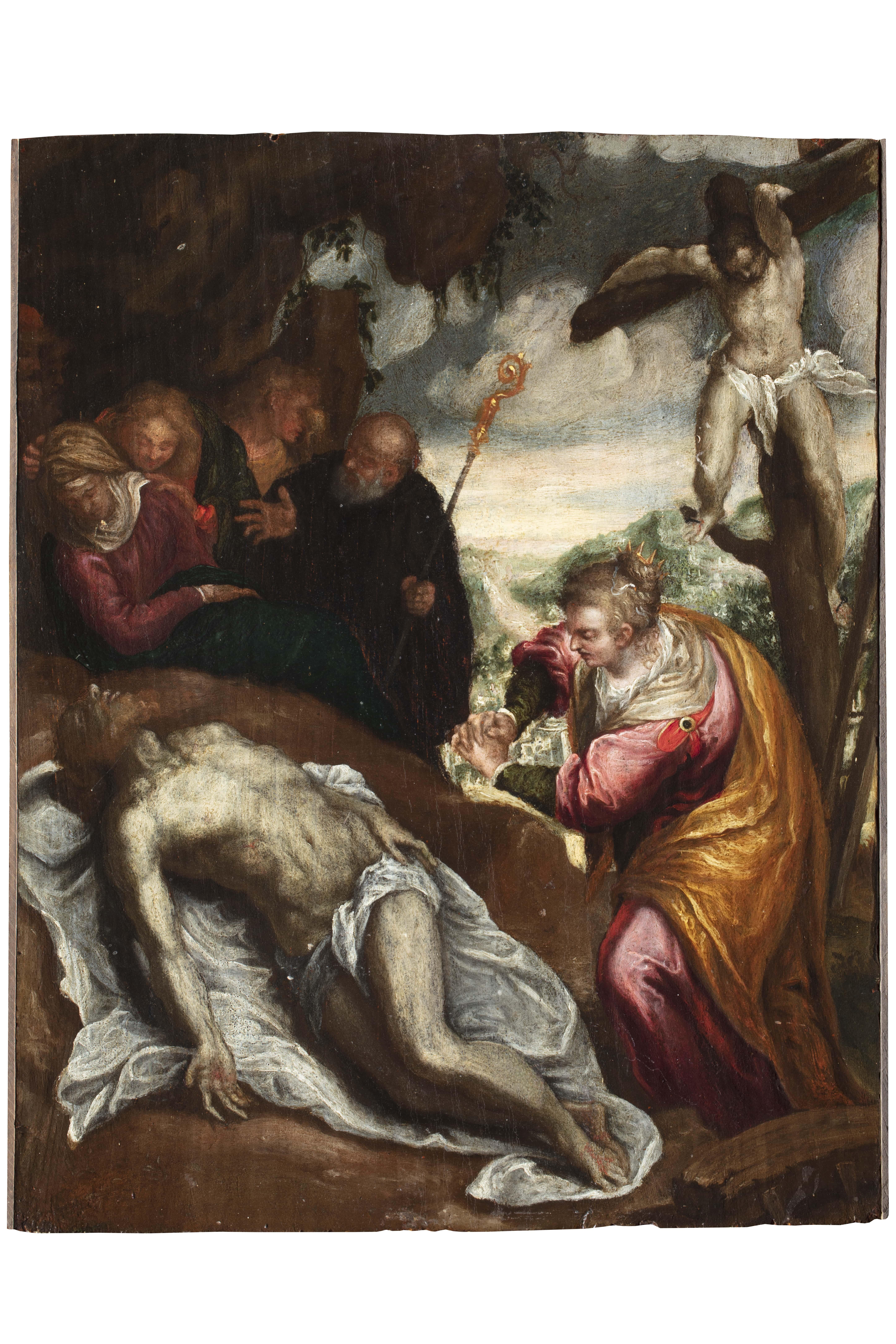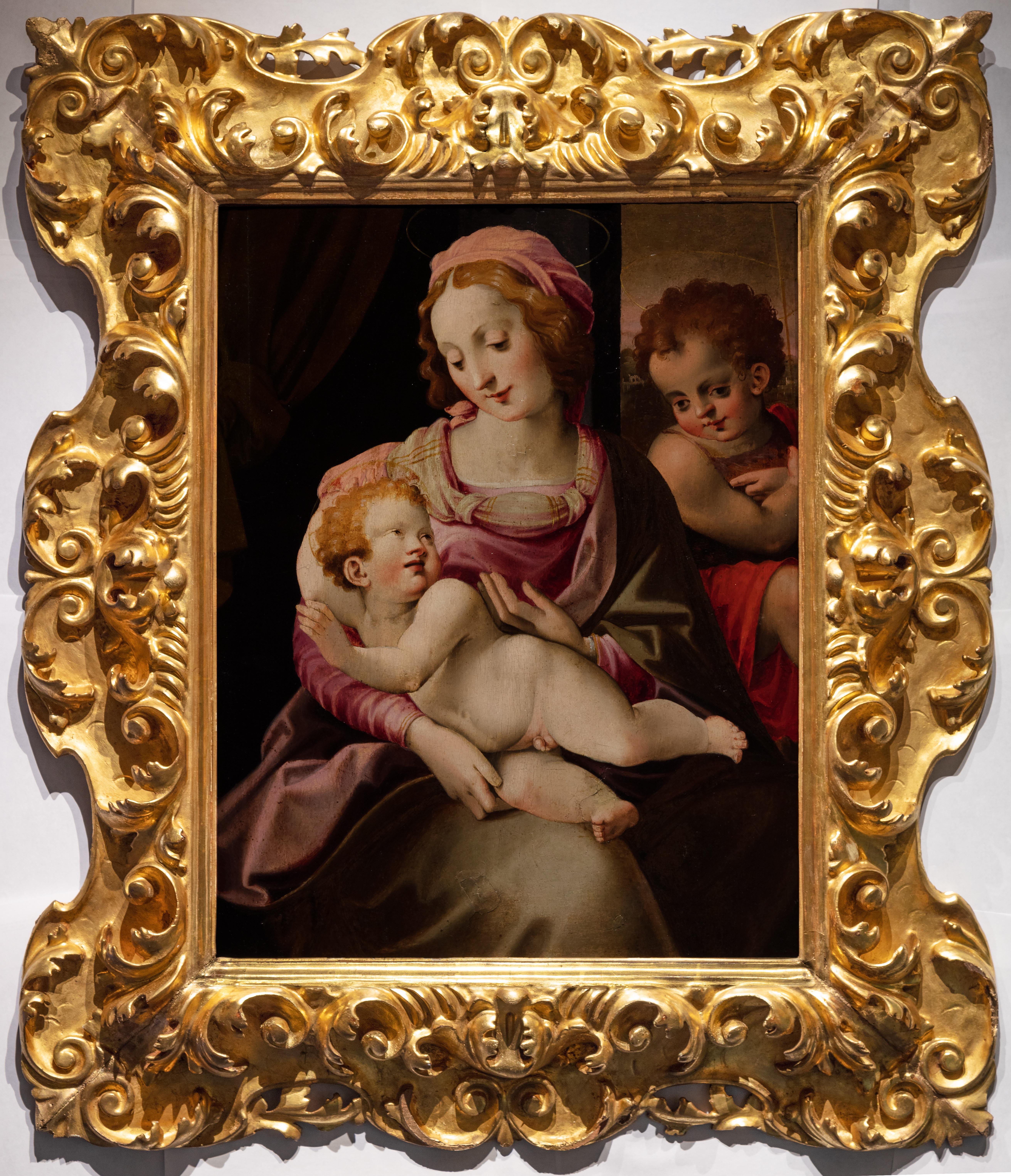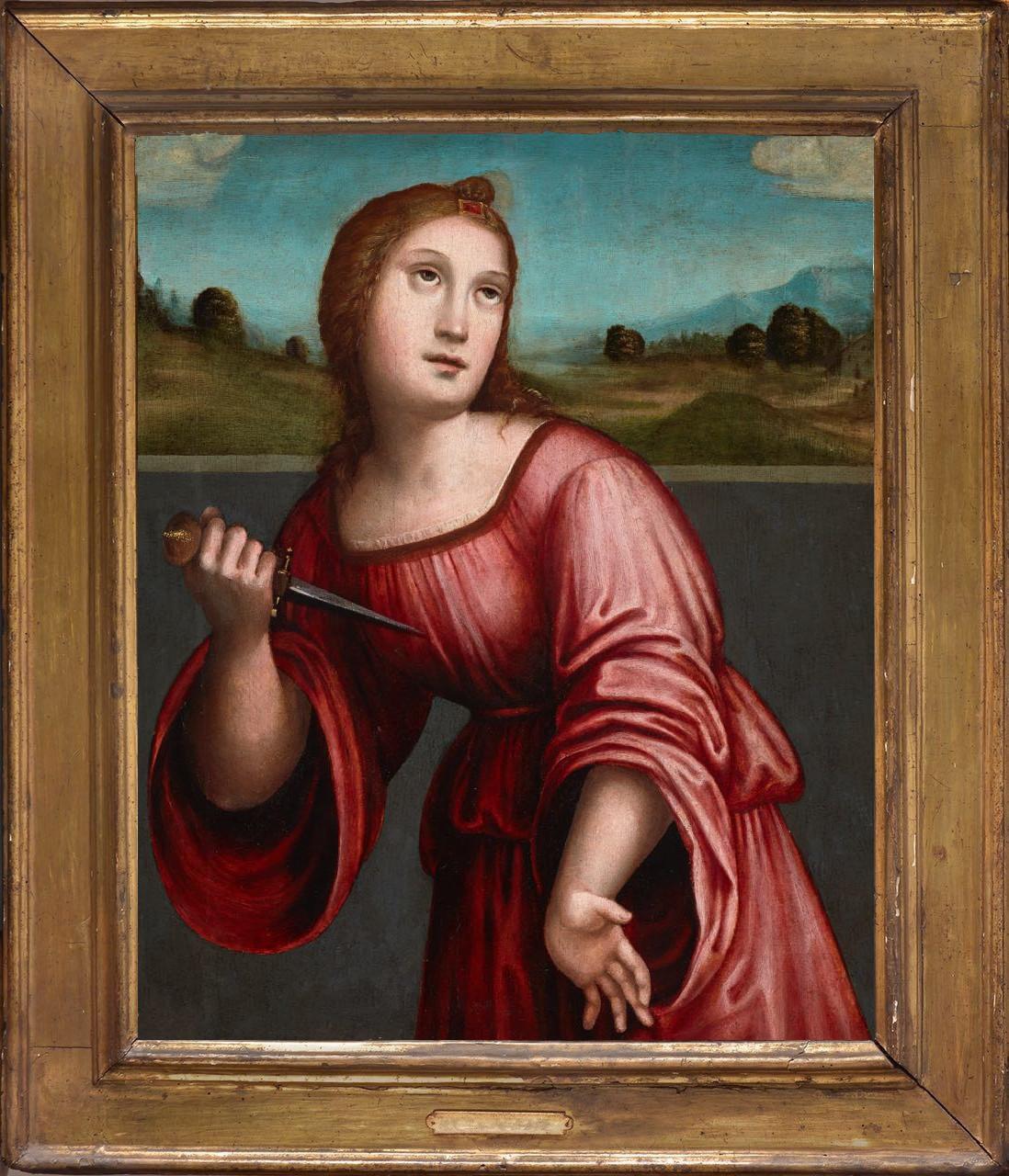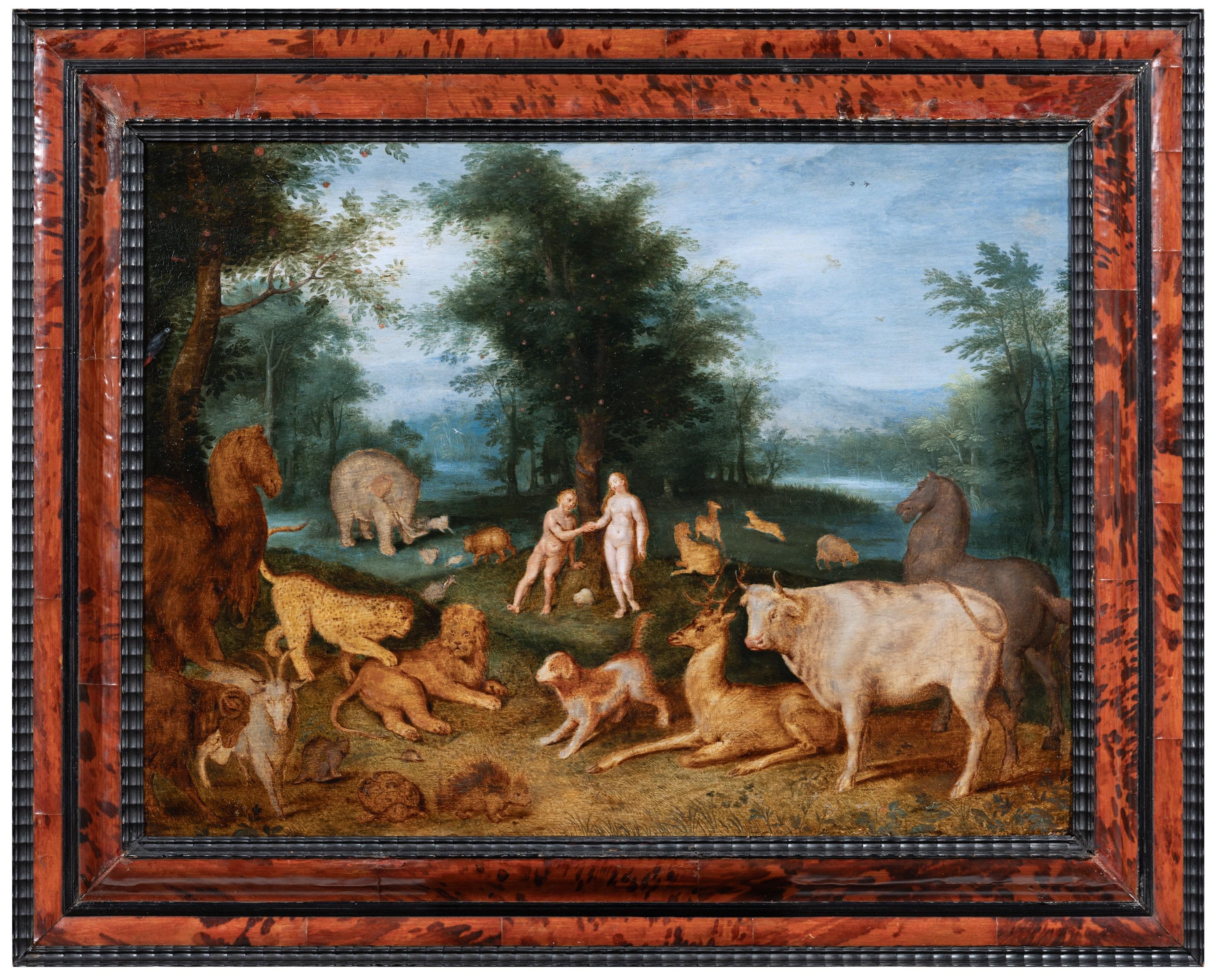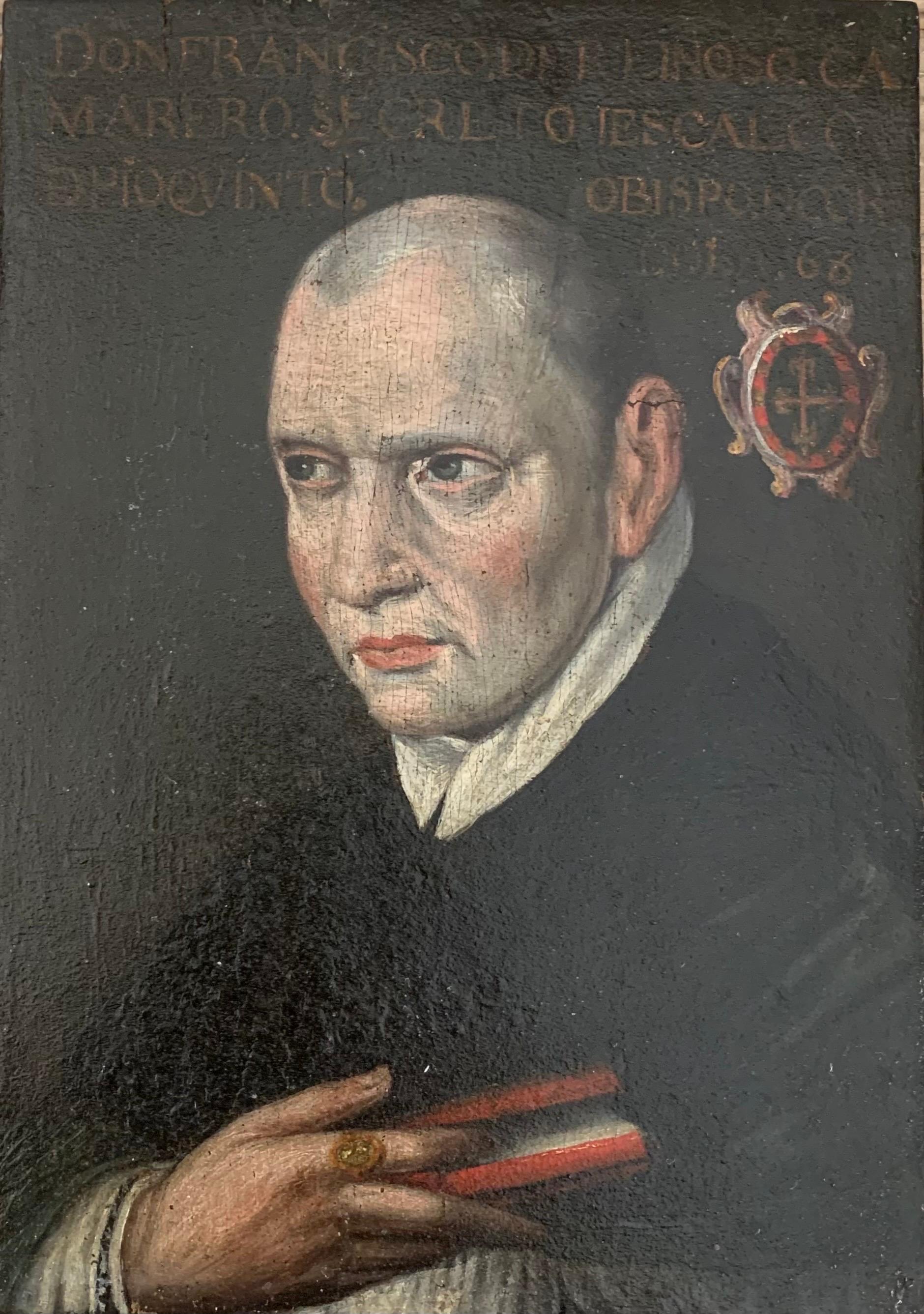Items Similar to Feast in the Garden of Love, 17th century Antwerp, Louis de Caullery
Want more images or videos?
Request additional images or videos from the seller
1 of 15
Louis de CaulleryFeast in the Garden of Love, 17th century Antwerp, Louis de Caullery
About the Item
Louis de Caullery (1582-1621)
Antwerp School early 17th century
Oil on oak panel
Dimensions: h. 51 cm (20.08 in), w. 43 cm (16.93 in)
Ebonized wooden frame
Framed: h. 67 cm (26.38 in), w. 59 cm (23.23 in)
Our work is registered in the RKD database under the number 214025 (The Rijksbureau voor Kunsthistorische Documentatie, headquartered in The Hague in the Netherlands, is one of the most important documentation centers specializing in the history of art)
Provenance:
- private collection, United Kingdom - Christie's sale, November 5, 2003, lot no. 32
- 1983-2003 Jan Lipinski Collection, Frankfurt, Germany - Sotheby's sale, London, 23 June 1982, lot 37
- before 1982 collection of the princes of Schaumburg-Lippe at Bückeburg Castle, Germany
Our painting with a prestigious princely provenance illustrates a scene of a gallant meeting taking place in a park. The elegant figures, richly dressed in Renaissance fashion, are seated in the shade of the trees enjoying wine, delicious food and music. To the sounds of violins and lutes are added the trickling of a fountain. Time seems to stand still in these gastronomic and romantic celebrations.
The theme of courtly love treated here derives from medieval iconography of the “garden of love” type. It was brought back into fashion by the Antwerp painters of the genre (Sebastien Vrancx, David Vinckboons and Louis de Caullery): the gallant assemblies made up exclusively of the upper bourgeoisie celebrated love and the joy of living. However, a moralizing message associated with another theme is cleverly concealed by the painter and is only discernible by the artifice of a small scene in the foreground, the young pages having fun blowing soap bubbles, while a little boy is lying on the skull. An unexpected character also seems to be part of the feast: a jester recognizable by his cap hides behind a tree spying on the merry company.
This is how, in fact, beyond the pleasant and apparently superficial character of the painting, the theme of Vanity is revealed through its attributes: the soap bubbles signify the fragility of life which bursts, the skull is the symbol of death, the jester symbol of human madness is ultimately the only lucid being. Thus all his intruders into the festivities admirably placed by the painter in the composition serve to make us reflect on the brevity of life and love, the transience of earthly pleasures and the artist invites the viewer to concentrate on the life of the 'beyond.
It is important to emphasize that at the end of the 16th century and beginning of the 17th century, Vanity is often associated with a young child, in itself a symbol of the ephemeral nature of youth, leaning or sitting on a skull, having fun blowing soap bubbles, sometimes in the presence of a vase from which smoke escapes. These are the main symbols of the transience of time in use late 16th century, before the vanities triumphed, in the 17th century, through the genre of still life.
Louis de Caullery seems to have been particularly interested in the representation of gallant scenes, through different subjects: festivals, carnivals, allegories of the senses are all pretexts for the representation of groups of animated and colorful characters. The numerous small figures meticulously executed in skillfully sought-after and varied postures, the vibrant rendering of the costumes, the attention paid to details, all its characteristics are specific to the works of Louis de Caullery, who likes to depict small elegant figures richly dressed in lush landscapes or rich palace interiors.
- Creator:Louis de Caullery (1580 - 1621, Belgian, French)
- Dimensions:Height: 26.38 in (67.01 cm)Width: 23.23 in (59.01 cm)
- Medium:
- Movement & Style:
- Period:Early 17th Century
- Condition:
- Gallery Location:PARIS, FR
- Reference Number:1stDibs: LU2433214457842
We have little information on the origins of the artist. He was probably born in Cauery, the town whose name he ended up taking and which is located 18 km from Cambrai. He probably maintained ties with this region. In 1594 he was recruited under the name of "Loys Solleri" as an apprentice of the landscape gardener Joos de Momper. When he became master of the Guild of Saint Luke in Antwerp in the list of 1602-1603, he registered under the name of "Lowis Callori."
Caullery was a prolific painter of genre scenes and mythological paintings. His elegant style is oriented towards late mannerism. His multi-figure compositions have aptly been compared to the work of Frans Francken and other mannerist masters. Small-scale figures are depicted in huge squares, interior scenes or in a landscape with a very large depth of field.
His mixture of genre scenes and landscape painting is thoroughly Nordic and even when he introduced mythological and religious themes it was in the manner of a non-heroic genre painter.
There are no signs of stylistic evolution in his work. Some paintings are dated but they mainly belong to the end of his career, such as the Allegory of the senses of 1618, at the castle of Nelahozeves in Poland, or another version of the same subject, dated 1620 and on deposit at the Museum of Fine Arts de Cambrai, as well as the Crucifixion of 1619 at the Brussels Museum. Given the large number of works that have come down to us and the repetition of certain compositions, it seems that Caullery directed a large and very active workshop.
About the Seller
No Reviews Yet
Vetted Seller
These experienced sellers undergo a comprehensive evaluation by our team of in-house experts.
1stDibs seller since 2023
Typical response time: 1 hour
- ShippingRetrieving quote...Ships From: PARIS, France
- Return PolicyA return for this item may be initiated within 3 days of delivery.
More From This SellerView All
- Adam and Eve in paradise, studio of Jan Brueghel the Younger, 17th centuryLocated in PARIS, FRStudio of Jan Brueghel the Younger 17th century Antwerp school Oil on oak panel, h. 37 cm, w. 49 cm Tortoiseshell veneered baroque style frame...Category
Mid-17th Century Old Masters Figurative Paintings
MaterialsOil, Wood Panel
- The crossing of the Red Sea, 17th century Antwerp, studio Frans FranckenBy Frans Francken IILocated in PARIS, FRCrossing of the Red Sea Workshop of Frans Francken II (1581-1642) 17th century Antwerp School Oil on oak panel Dimensions: h. 49.5 cm, w. 64.5 cm (19.49 in x 25.39 in) Moulded and blackened wooden frame with wide mouldings, with inverted profile from the later period. Framed dimensions: h. 82 cm, w. 97 cm (32.28 x 38.19 in) Our panel illustrates one of the episodes of the Old Testament, recounted in the book of Exodus. After crossing the Red Sea...Category
17th Century Old Masters Figurative Paintings
MaterialsOil, Wood Panel
- Saint Jerome, Antwerp, 16th century, circa 1550, cercle of Lambert Van NoortLocated in PARIS, FRSaint Jerome in the desert Cercle of Lambert Van Noort (1520-1571, Antwerp) Antwerp School, mid-16th century Oil on oak panel. Dimensions: panel h. 69 cm (27.16 in), l. 52.5 cm (20.6...Category
16th Century Old Masters Figurative Paintings
MaterialsWood Panel, Oil
- Cercle of Ambrosius Francken, Adoration of the shepherds, 17th century AntwerpLocated in PARIS, FRAdoration of the shepherds, Cercle of Ambrosius Francken, Early 17th century Antwerp school Oil on oak panel: h. 55 cm, w. 43 cm (21.65 in x 16.93 in) 17th c. ebonized and moulded f...Category
Early 17th Century Old Masters Figurative Paintings
MaterialsOil, Wood Panel
- 16th century Flemish, Holy Family, workshop of P. Coecke Van Aelst (1502-1550)Located in PARIS, FRRest of the Holy Family during the Flight into Egypt Workshop of Pieter Coecke Van Aelst (1502-1550) 16th century Flemish school Oil on oak panel, Dimensions : panel: h. 34.25 in., ...Category
16th Century Old Masters Figurative Paintings
MaterialsOil, Wood Panel
- Ascension Day in Venice, Louis de Caullery (1582-1621), Flemish 17th centuryLocated in PARIS, FRAscension Day in Venice 17th century Antwerp School Attributed to Louis de Caullery (1582-1621) Oil on oak panel Dimensions: h. 19.68 in, w. 34.25 in Flemish style frame in ebonized ...Category
Early 17th Century Old Masters Landscape Paintings
MaterialsOil, Wood Panel
You May Also Like
- 16th Century by Venetian Maestro Deposition of Christ Oil on PanelLocated in Milano, LombardiaFormerly Canesso Collection, Paris. Publications: Bozzetti, modelletti, sketches: dalla collezione di Giorgio Baratti (From the Giorgio Baratti Collection) curated by Anna Orlando, ...Category
16th Century Old Masters Figurative Paintings
MaterialsOil, Wood Panel
- Madonna and Child with the Infant Saint John the BaptistLocated in New York, NYInscribed, reverse: Fr Brina Provenance: Private Collection, New Jersey. Francesco Brina was one of the “Studiolo” painters, responsible for the panel of Neptune and Amphitrite in F...Category
16th Century Old Masters Paintings
MaterialsOil, Wood Panel
- Antique English 19th century marine sceneBy William AndersonLocated in Woodbury, CTOutstanding English late 18th / early 19th century marine scene by one of Britain's best known and sought after painters. William (or Wiliam) Anderson (1757 – 27 May 1837) was a Scottish artist specializing in maritime and patriotic themes. He was well-regarded for his detailed and accurate portraits of ships under sail, exhibiting his works annually in London between 1787 and 1811 and then occasionally until 1834. Anderson influenced other artists, notably John Ward and others of the Hull school. Anderson's early life is obscure, but he is known to have trained as a shipwright before moving to London to become a maritime painter when he was about 30. His training served him well as a painter, providing "a practical nautical knowledge" of his subjects. He earned a reputation for "accuracy and refinement of detail" and was admired for his bright, clear colours. He worked in both oils and watercolours. He based his style on that of well-known Dutch maritime...Category
1810s Old Masters Figurative Paintings
MaterialsOil, Wood Panel
- Lucretia, by Giacomo Raibolini Francia. Detto il Francia. Oil on panel, framedLocated in Brooklyn, NYGiacomo used to paint with his brother Giulio, identifying their works with the monogram «I I». The strong influence of his father, Francesco, is undeniable in all his works, althoug...Category
16th Century Old Masters Figurative Paintings
MaterialsOil, Wood Panel
- Spanish school. Secretary of Pope Pius V, abbot of Husillos, bishop of Córdoba.Located in Firenze, ITPortrait of Francisco de Reynoso y Baeza. Secretary of Pope Pius V, abbot of Husillos and bishop of Córdoba. Francisci de Reynoso. Early 17th century. Small-format portrait from ...Category
17th Century Old Masters Portrait Paintings
MaterialsParchment Paper, Oil, Wood Panel
- Dutch School, 17th Century, Shipping in a Stiff Breeze, a City BeyondLocated in Stockholm, SEWe are delighted to present a significant piece from the Dutch School, most likely dating back to the late 17th century. This captivating painting showcases the dynamic force of nature with three ships vigorously navigating through stormy waters. The foreground is a scene of nautical struggle, as figures are depicted working intensely with the sails, steering, and bracing against the tumultuous sea. In the serene background, the silhouette of a quaint town emerges, with spires from churches and the outlines of various buildings is visible. This juxtaposition of the calm town against the chaotic foreground serves as a powerful reminder of the unpredictability of life and nature. Dominating the canvas, the sky occupies two-thirds of the painting, filled with brooding clouds that occasionally break to reveal patches of blue. The presence of birds adds a dynamic element to the otherwise ominous atmosphere. While the artist remains unknown, the work is quintessentially Dutch in its execution, with meticulous attention to detail and a profound understanding of maritime life. The painting's oval shape is quite distinctive and is complemented by a suitably antique octagonal black frame, which adds to its historical charm. This piece is a testament to the mastery of Dutch maritime painting...Category
17th Century Old Masters Landscape Paintings
MaterialsOak, Oil, Wood Panel
